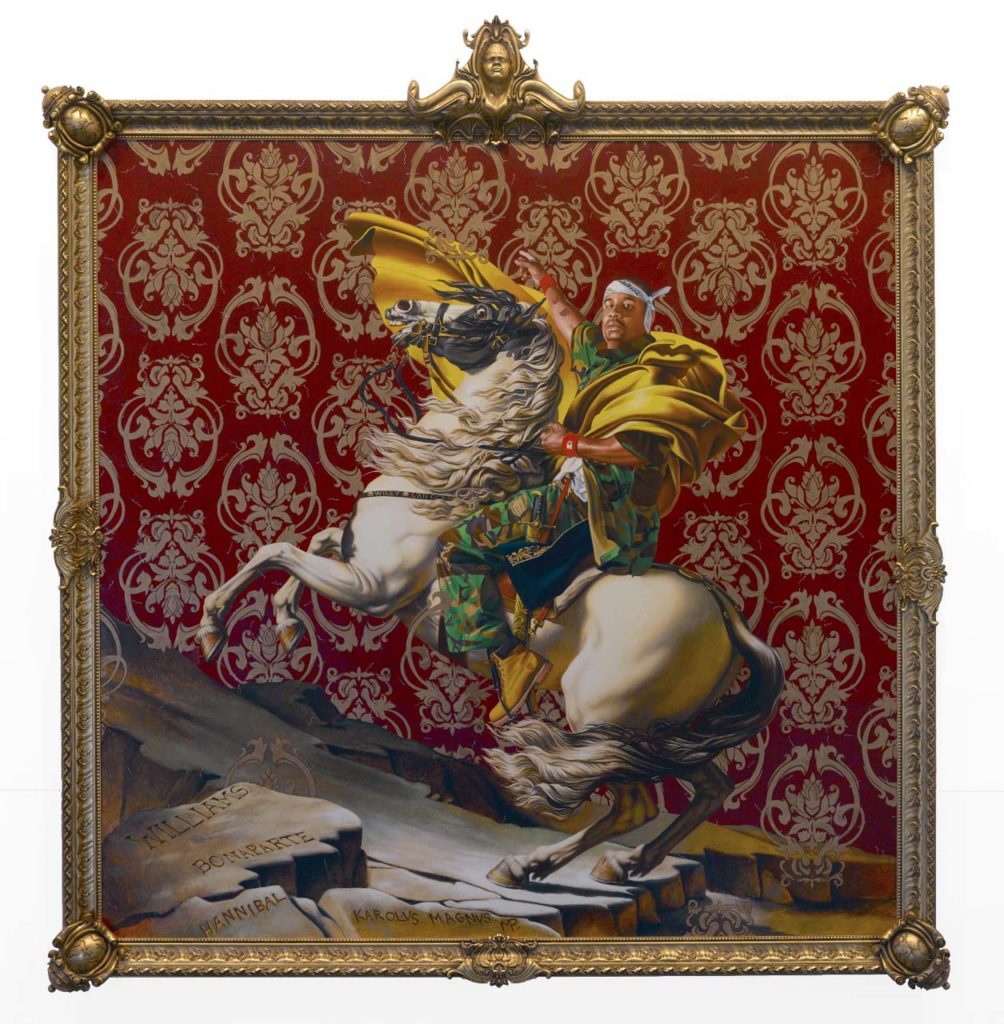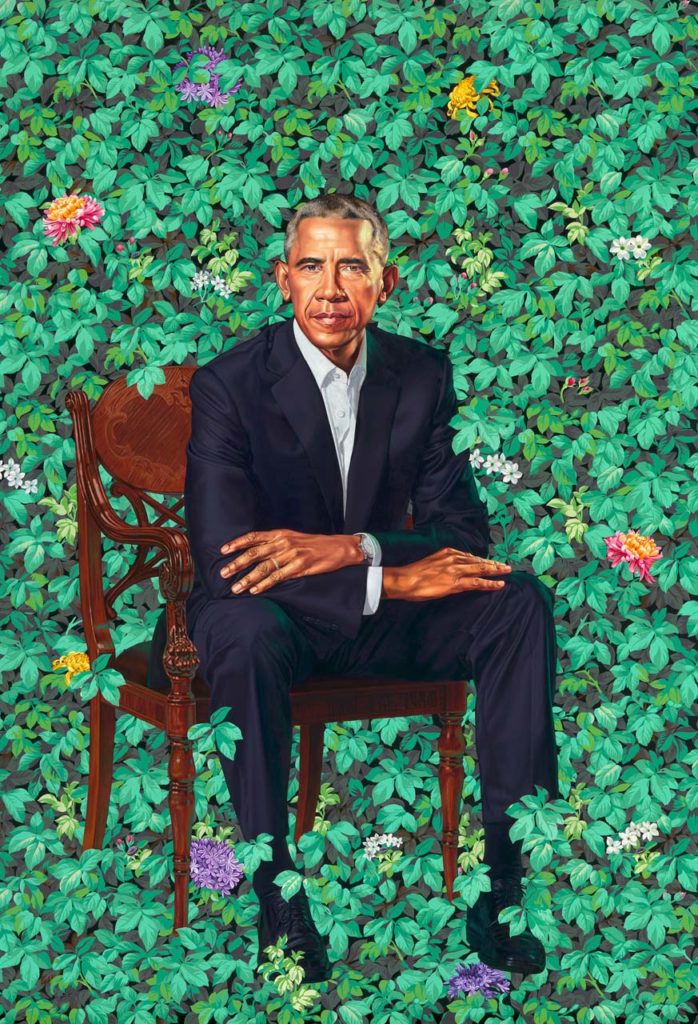GREENPOINT ARTIST KEHINDE WILEY’S NATIONAL GALLERY PORTRAIT OF BARACK OBAMA WAS THE LATEST IN A FASCINATING LINE OF WRY, CELEBRATORY, AND IRONY INFUSED DEPICTIONS OF PEOPLE OF COLOR
BY MATT SCANLON
Presidential portraits, by tradition if not necessity, are simultaneous exercises in elevation and disposability, just as their subjects become in the political landscape. From Gilbert Stuart’s portrait of Thomas Jefferson to John Singer Sargent’s 1903 vision of Teddy Roosevelt, and all the way through Robert Anderson’s gently impressionistic interpretation of George W. Bush with very few exceptions (one certainly Elaine de Kooning’s 1963 near abstract portrait of John F. Kennedy), these images, though occasionally stylistically unique, were seemingly intended to flow into a continuum, and there might be an e pluribus Unum esque reason for defending that.

So, when Kehinde Wiley’s portrait of Barack Obama was unveiled at the National Portrait Gallery in early February a shock of green foliage punctuated by the occasional vibrant flower, and into which was seated (yet somehow floating) the ex-president many in the crowd of media and art Brahmins were taken aback, some pleasantly, some decidedly not.
In keeping with Wiley’s long history of, as he put it in his Green point studio’s online artist description, “quoting historical sources and positioning black men within the field of power,” his often “heroic paintings evoke a modern style instilling a unique and contemporary manner, awakening complex issues that many would prefer remain mute,” including the effects of privilege and the state of race relations. Unofficially dubbed “Obama in the Garden,” the work was memorably termed by Vinson Cunningham, staff writer for The New Yorker, as “a perplexing spatial puzzle… [That seems] equally applicable to the meanings of portraitist and President. Is this ecstatic realism or total fever dream? A momentary slippage or a new stability? An exercise in canon making or sneaky deconstruction?”
From his earliest days producing portraits based upon photos taken of young men on the street of Harlem, to “The World Stage” series, in which models from Senegal, Dakar, Rio de Janeiro, and other “urban landscapes” were depicted often in a style reminiscent of portraitists like Reynolds, Gainsborough and Titian Wiley has mixed reality, fantasy, and romanticism like no other New York artist (he also has a residence in Los Angeles). Brooklyn Museum of Art goers might recall that, in addition to the career retrospective “Kehinde Wiley: A New Republic,” which was on exhibit in 2015, the oil on canvas Napoleon Leading the Army Over the Alps (2005) long hung in the Museum’s entrance hall a work in which Wiley borrowed some of the structure of Jacques Louis David’s Bonaparte Crossing the Alps at Grand Saint Bernard (1800-01), but swapped the French emperor for a black man in Timberlands and camo clothing. Wry and celebratory, biting and ironical, it is one of the most remarkable portraits of the 21st century.

The “A New Republic” exhibit is now traveling and currently on view at The Toledo Museum of Fine Art in Toledo, Ohio, but a number of Wiley’s paintings and sculptures are among Brooklyn Museum’s permanent collection. He is represented locally by Sean Kelly Gallery (skny.com) in Manhattan.
Kehinde Wiley
Kehinde.wiley.com


